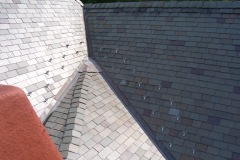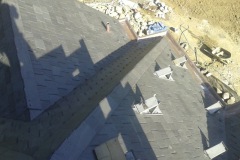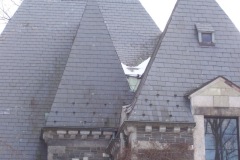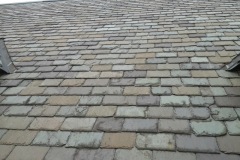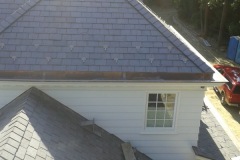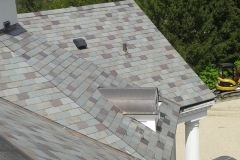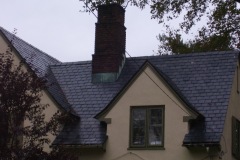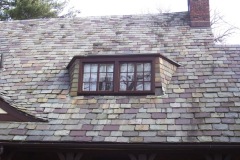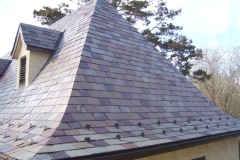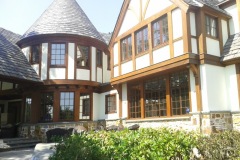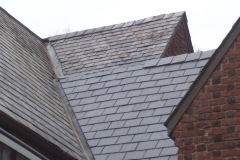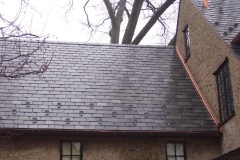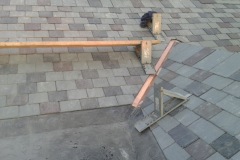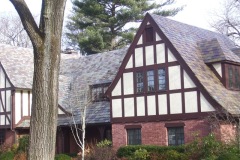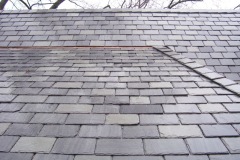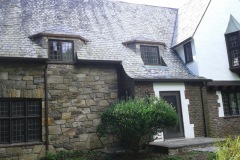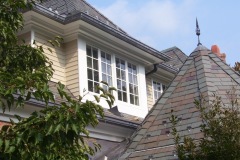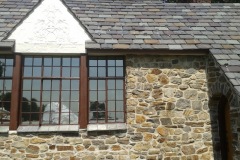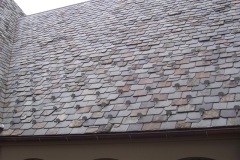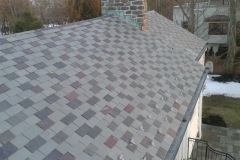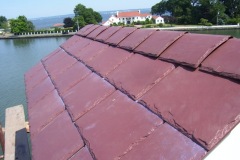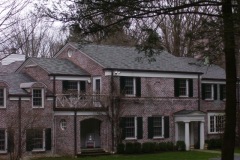- Slate is a dense, tough, durable rock which is mined from quarries generally from the eastern United States.
- Roofing slate comes in many different sizes, thickness, and colors. The basic colors of roofing slate are black, gray, green, purple, and red.
- Exposure to weather causes all slate to change slightly in color. The degree of color change varies with different slates.
- Roofing slate thickness are a standard 3/16 of an inch thick and can be up to 2 inches thick.
- Plastic slate, which looks very similar to stone slate, is a more inexpensive option.
- The natural slate is rigid and strong, like a piece of glass.
- The quality, color and longevity vary depending on where the slate was quarried. The main quarries today are in Virginia, Pennsylvania, Vermont and New York.
- Slate roofs are fireproof, strong enough to resist hail storms, aesthetically appealing and can last a century or even longer.
- They are mainly installed on steep roofs.
- Sea green slate – a long lasting roof slate that is also known as fading gray-green slate, for its fading color due to weathering. This is a hard slate from Vermont with a life expectancy of about 150 years on average.
- Purple slate – stays a dark purple color throughout its life. This is an excellent slate with a life expectancy of 150+ years and these roofs are highly restorable.
- Unfading green slate – an excellent light green slate that could last 200 years or more.
- Pennsylvania black slate – a softer slate roof material, last up to 70 -125 years.
- Peach Bottom slate – dark black, hard, and long lasting with a life expectancy of 150-200 years.
- Monson slates – also a dark black slate that is quarried in Maine and last about 150 years.
- Buckingham, or Virginia Slate – a gray-black slate with a life expectancy of about 150 years. This slate contains countless tiny silica crystals it hat gleam when viewed in the sun, a unique characteristic of Buckingham slate.
- NY Red Slate – a very high quality slate with a life expectancy of 150-200 years.
- A modern roofing material, plastic slate is usually PVC or TPO.
- PVC is a thermoplastic polymer, while TPO is a thermoplastic olefin.
- Both are synthetically produced into plastic roofing to provide protection against
the elements and energy efficiency. - Plastic roofing is specially designed to withstand pounding water, because it is welded together with hot air to remove all seams, which prevents the passing of moisture.
- Reflect approximately 90% of UV and other rays, it lowers heat absorption and heavily reduces cooling costs.
- It’s fire-safe and highly suited to low slope roofs.
- It’s not capable of holding high weight.
- Plastic roofing tends to shrink, which eventually causes leaks.
- Plastic corrugated roofing is the most common profile for plastic roofing and it is available in an extensive range of sizes, thickness, colors, and designs.
- When combined with Micro Sealant technology, plastic slate have a life span of up to 35 years, and can expand/contract according to temperature fluctuations.
- Plastic roofing is a more inexpensive option.
Stone Roofs
The main types of slate in the United States are:

